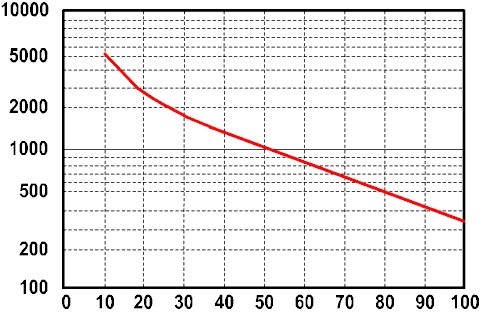I did a bit of research, and it appears that given how
little flying we do in a year (annual flight time compared to 8760 hours
per year), cooling the battery is probably of negligible benefit unless you
really cook it in flight. You hangar temperature on hot
summer days may have more effect because of the number of hours that get
stacked up annually.
I found the following on the web at http://www.windsun.com/Batteries/Battery_FAQ.htm#Temperature%20Effects%20on%20Batteries.
Fred
Even though battery capacity at
high temperatures is higher, battery life is shortened.
Battery capacity is reduced by 50% at -22 degrees F - but battery LIFE
increases by about 60%. Battery life is reduced at higher temperatures -
for every 15 degrees F over 77F, battery life is cut in half. This
holds true for ANY type of Lead-Acid battery, whether sealed, gelled, AGM,
industrial or whatever. This is actually not as bad as it seems, as the
battery will tend to average out the good and bad times.
Battery charging voltage also
changes with temperature. It will vary from about 2.74 volts per cell (16.4
volts) at -40 C to 2.3 volts per cell (13.8 volts) at 50 C (122F). This is why
you should have temperature compensation on your charger or charge control if
your batteries are outside and/or subject to wide temperature
variations
Battery life is directly related
to how deep the battery
is cycled each time. If a battery is discharged to 50% every day, it will last
about twice as long as if it is cycled to 80% DOD. If cycled only 10% DOD, it
will last about 5 times as long as one cycled to 50%. Obviously, there are
some practical limitations on this - you don't usually want to have a 5 ton
pile of batteries sitting there just to reduce the DOD. The most practical
number to use is 50% DOD on a regular basis. This does NOT mean you cannot go
to 80% once in a while. It's just that when designing a system when you have
some idea of the loads, you should figure on an average DOD of
around 50% for the best storage vs cost factor. Also, there is an upper limit
- a battery that is continually cycled 5% or less will usually not last as
long as one cycled down 10%. This happens because at very shallow cycles, the
Lead Dioxide tends to build up in clumps on the positive plates rather in an
even film. The graph below shows how lifespan (cycles, vertical axis) is
affected by depth of discharge (percent, horizontal axis). The chart is for a
Concorde Lifeline battery, but all lead-acid batteries will be similar in the
shape of the curve, although the number of cycles will vary.
